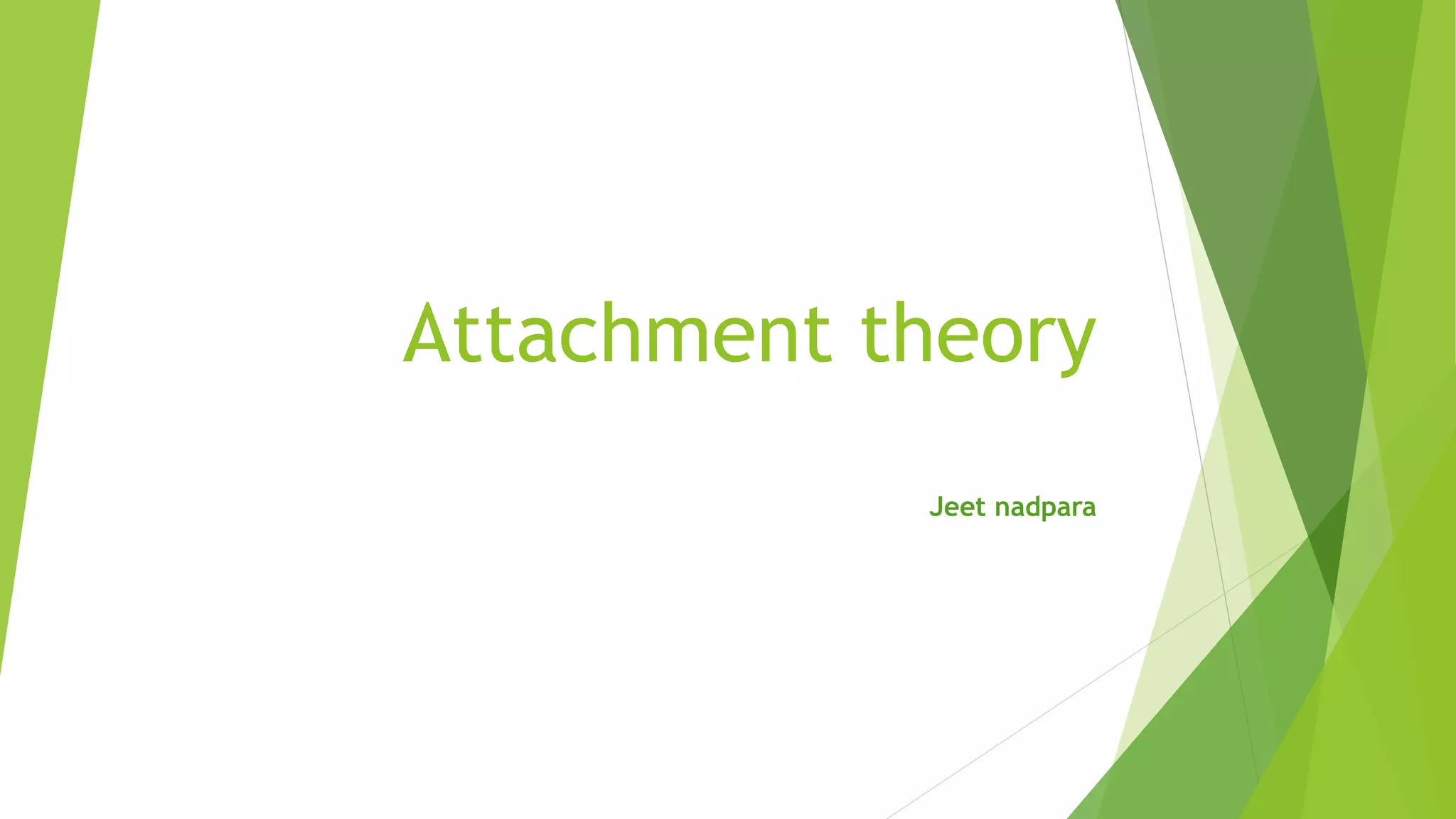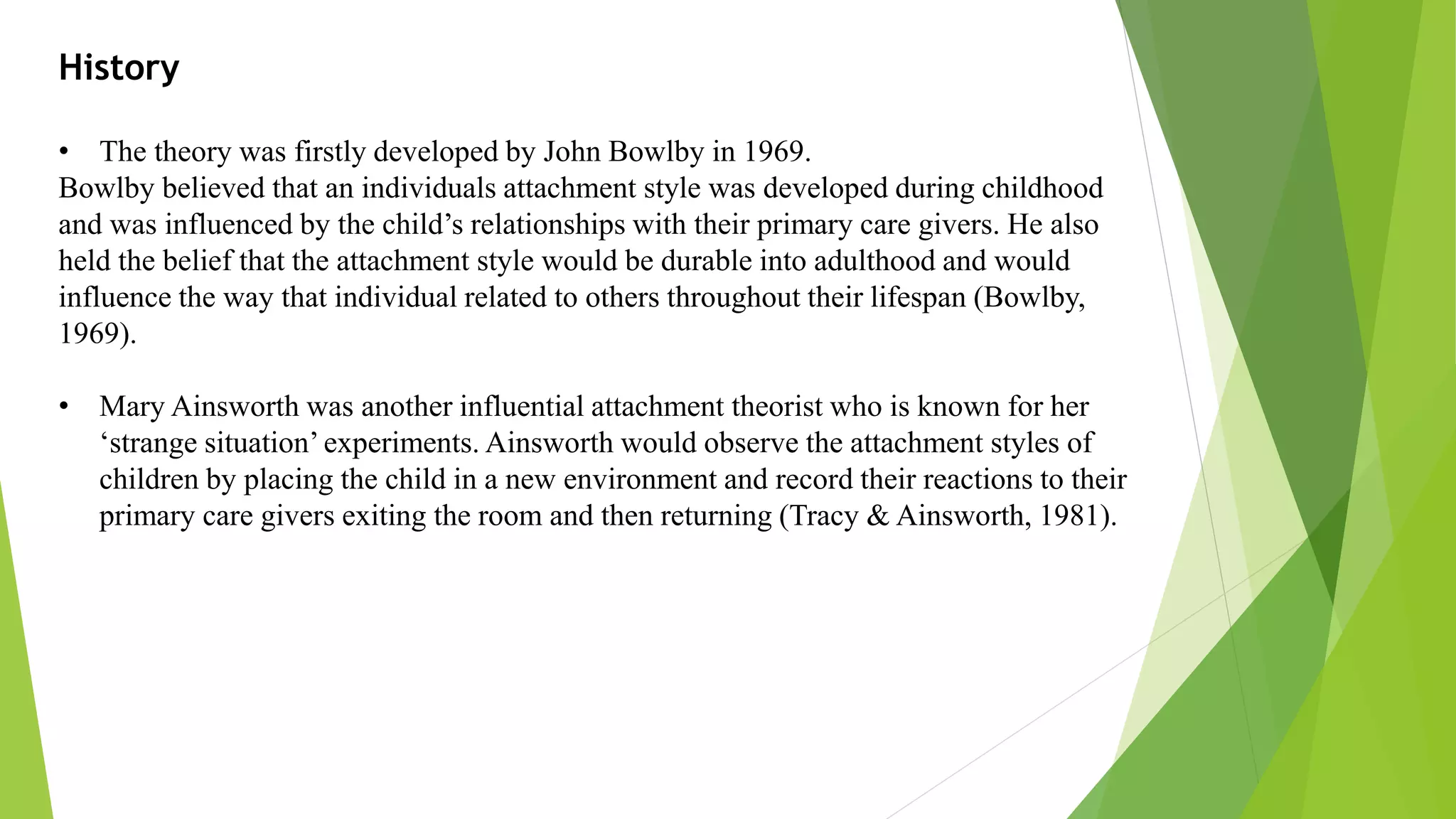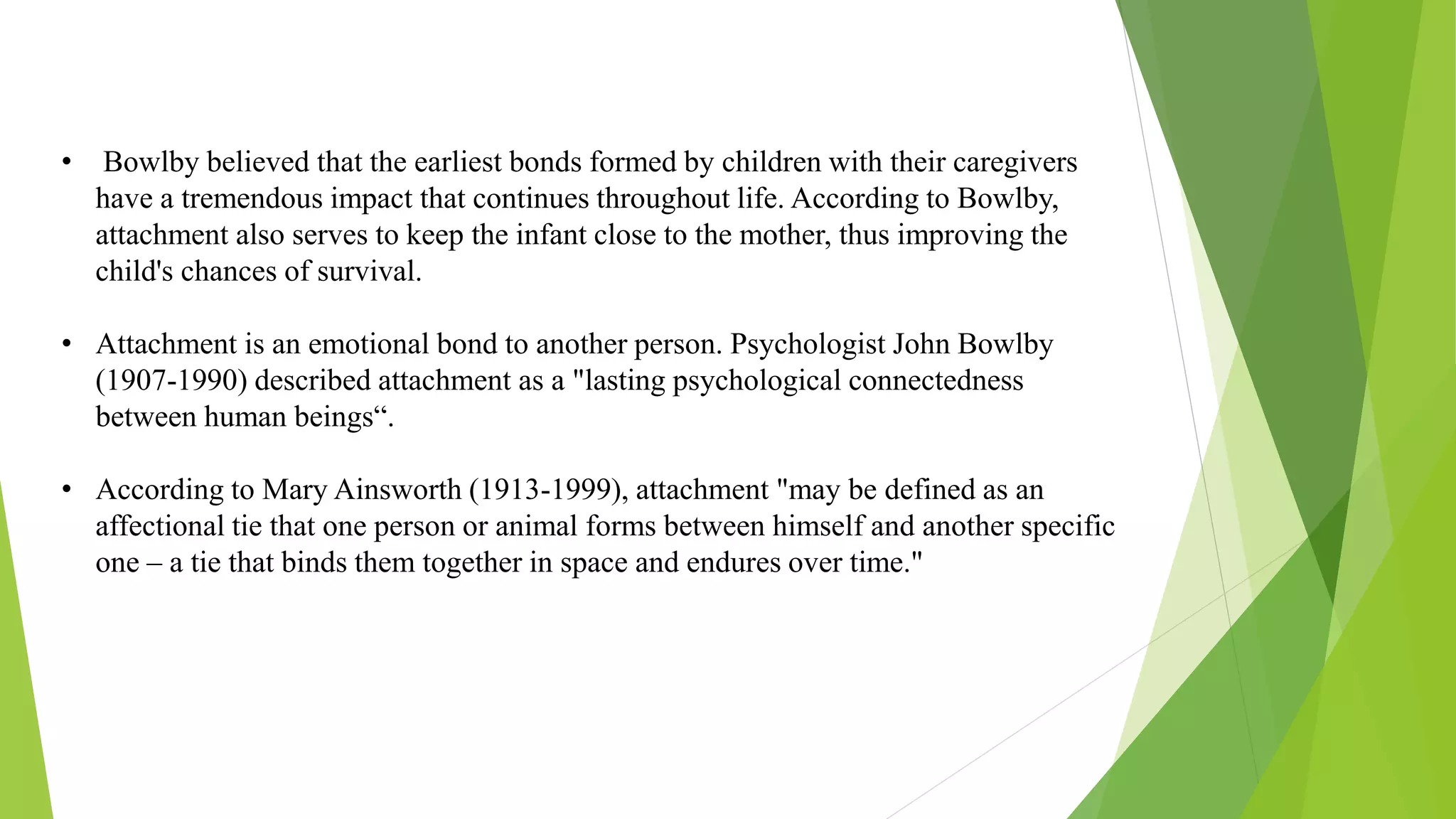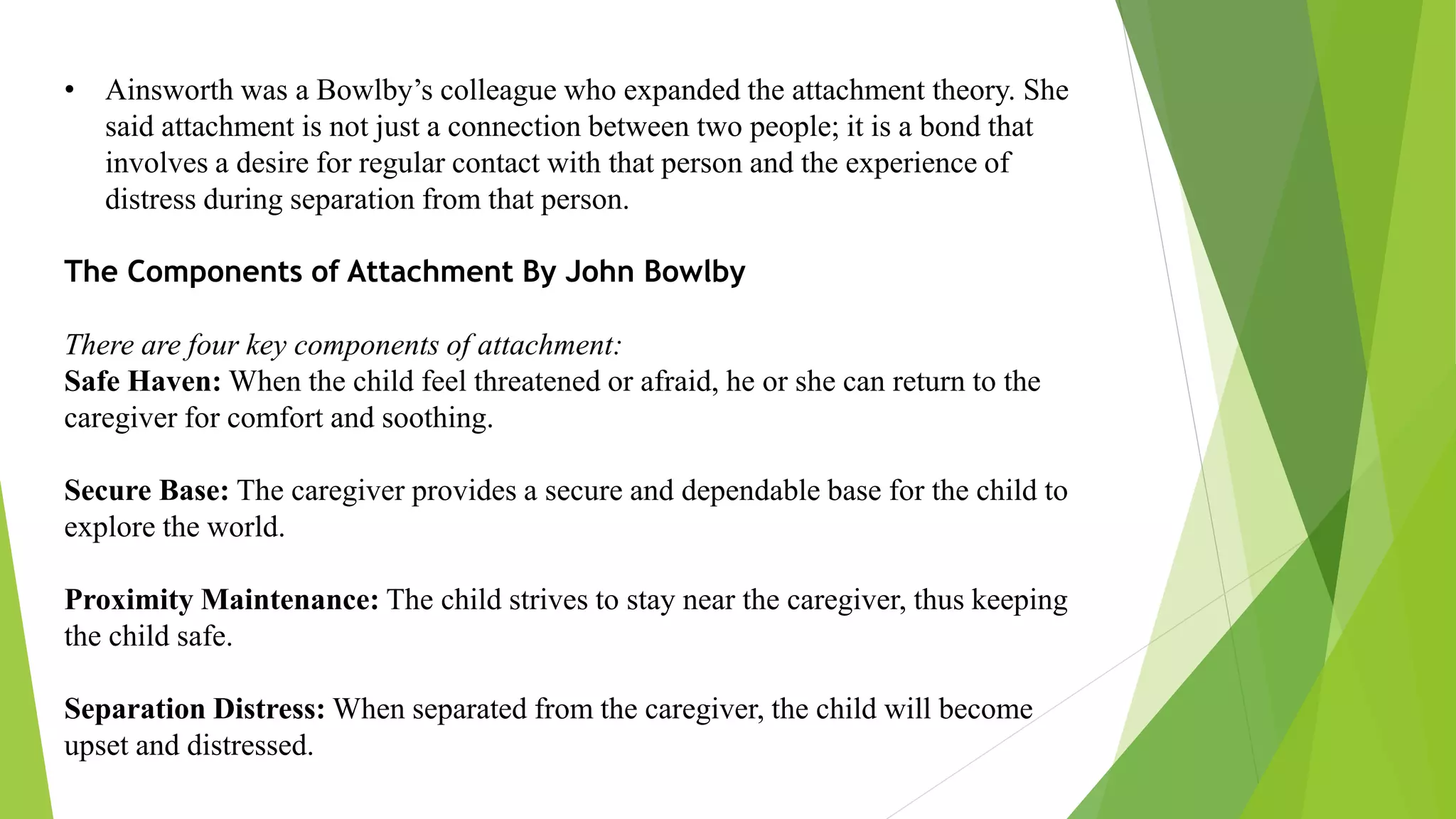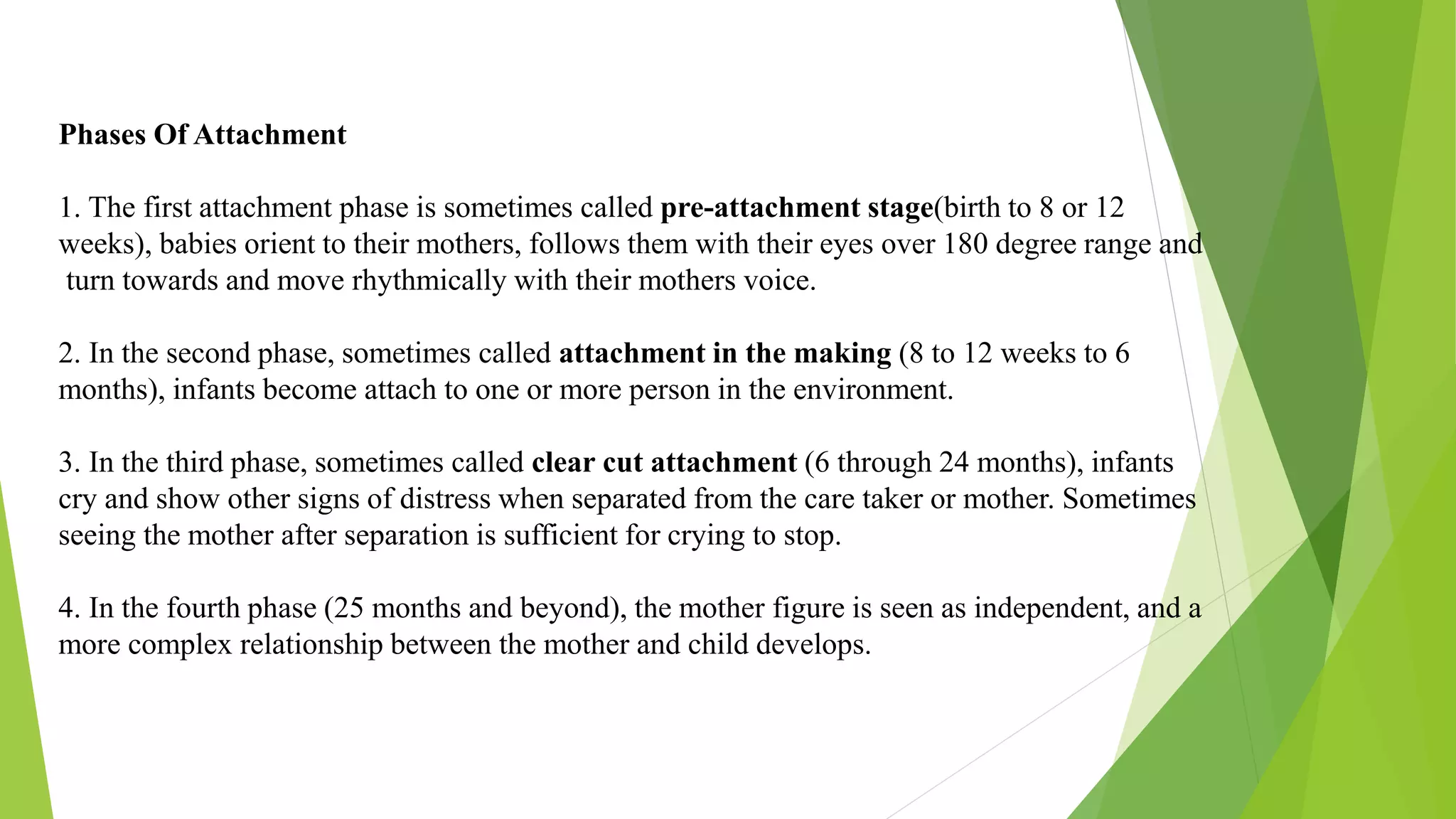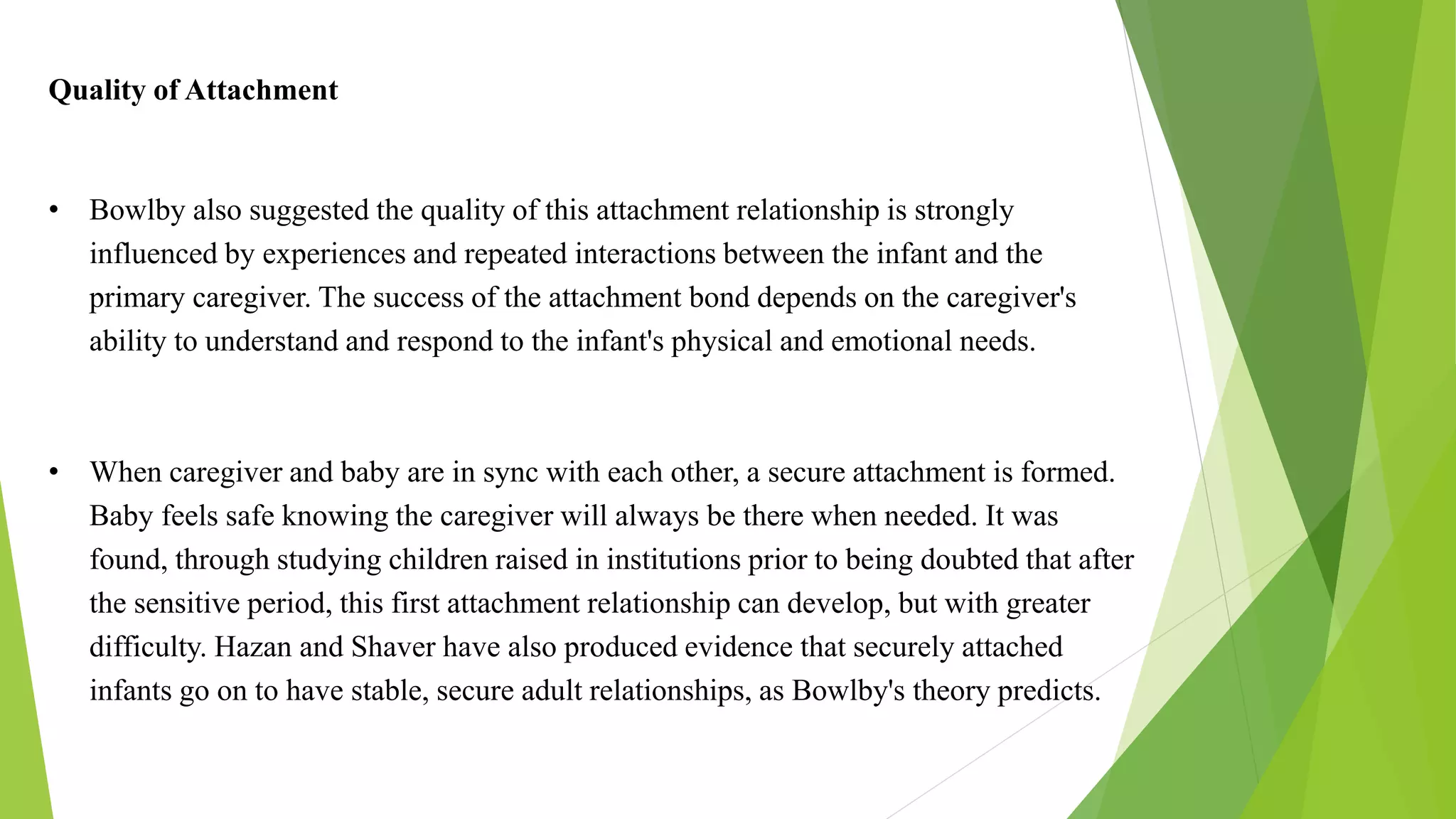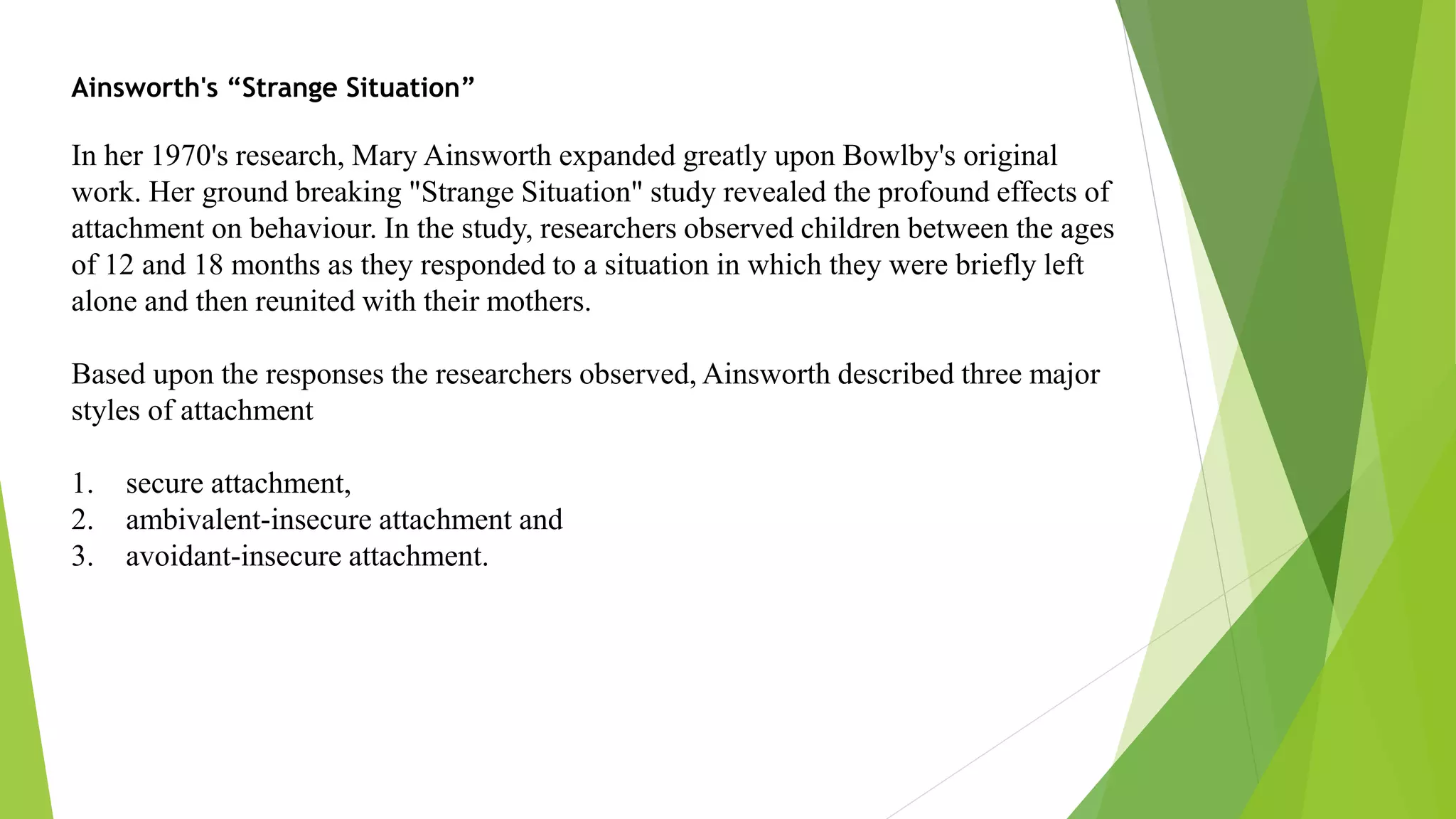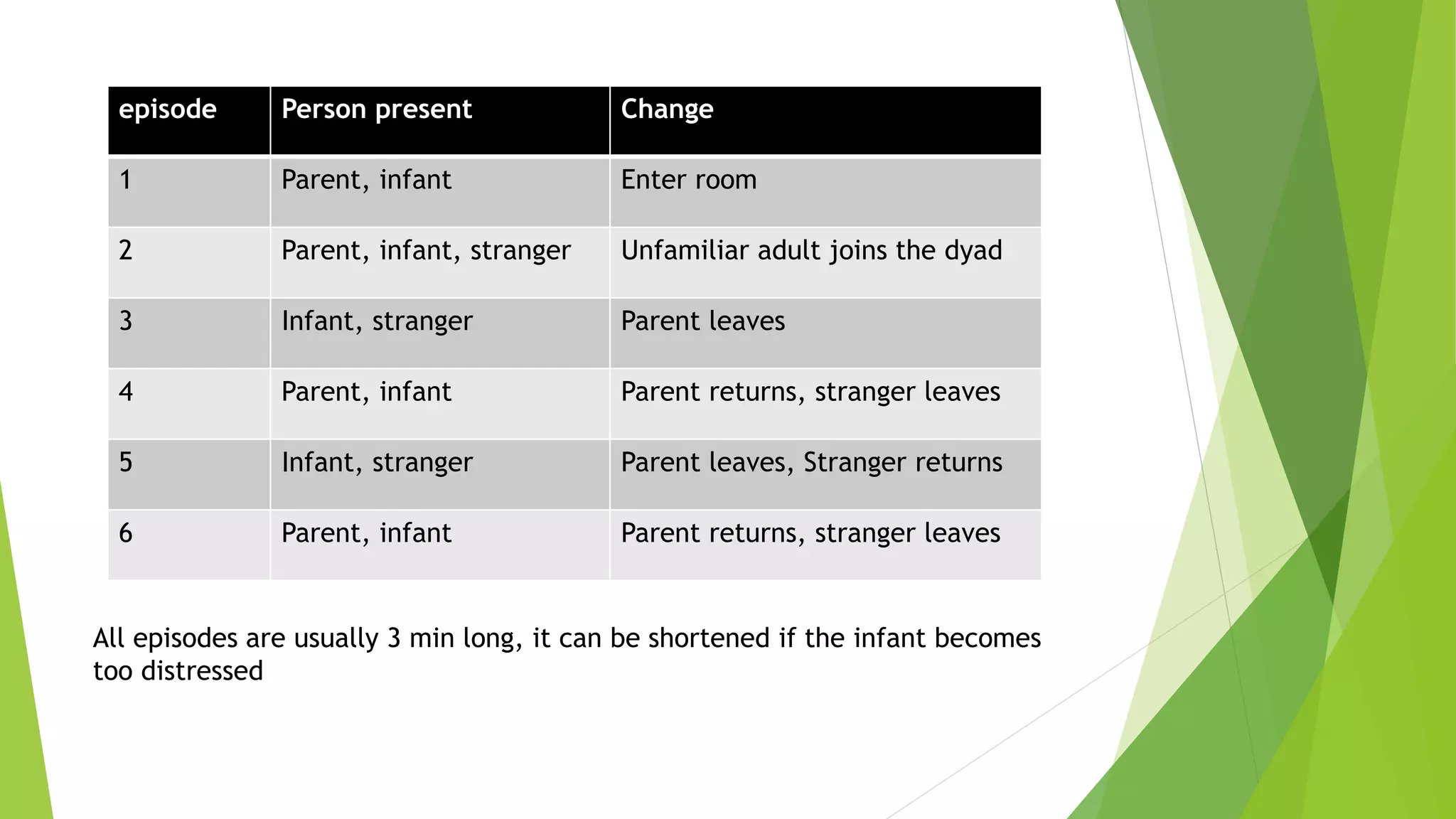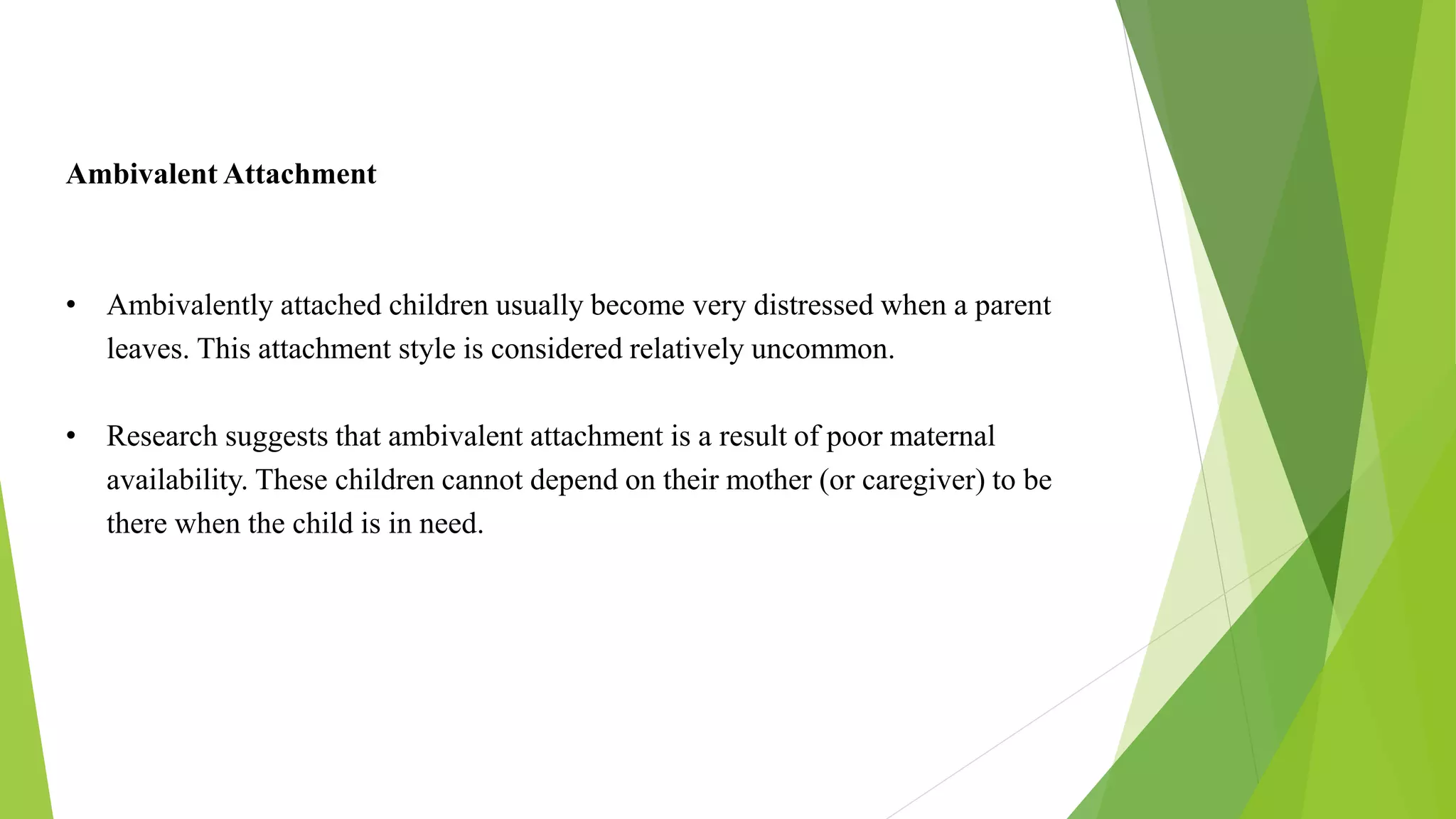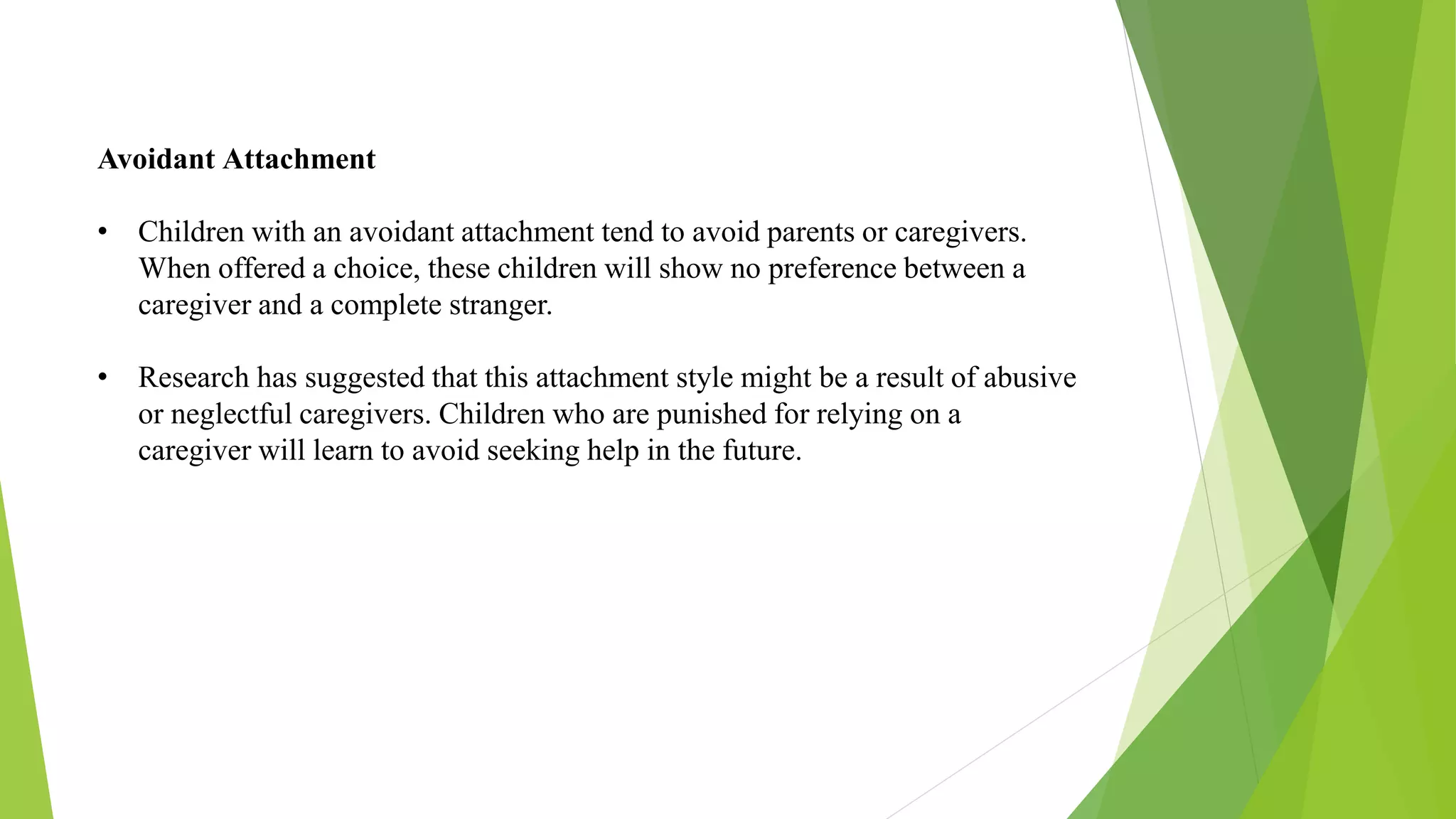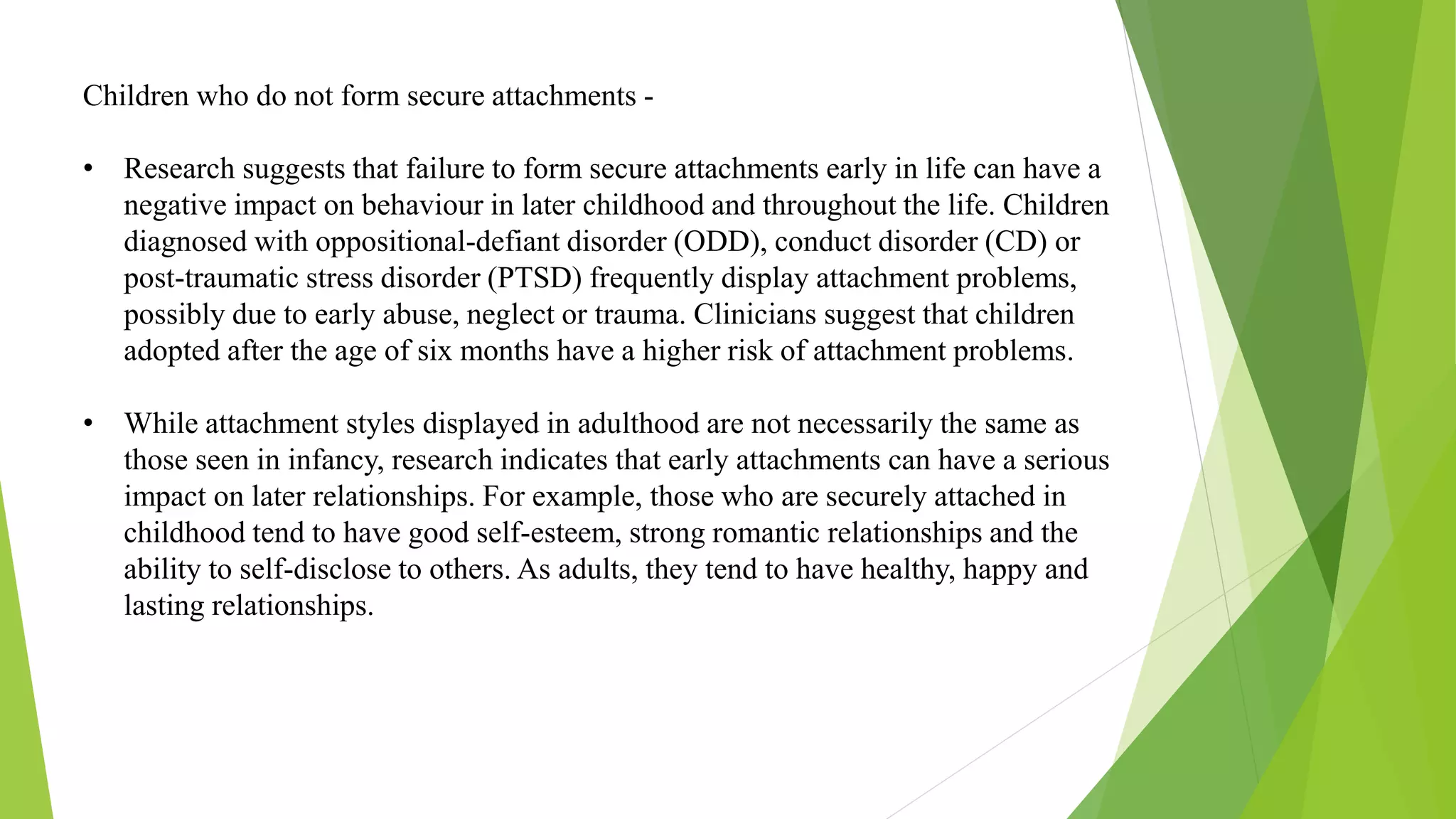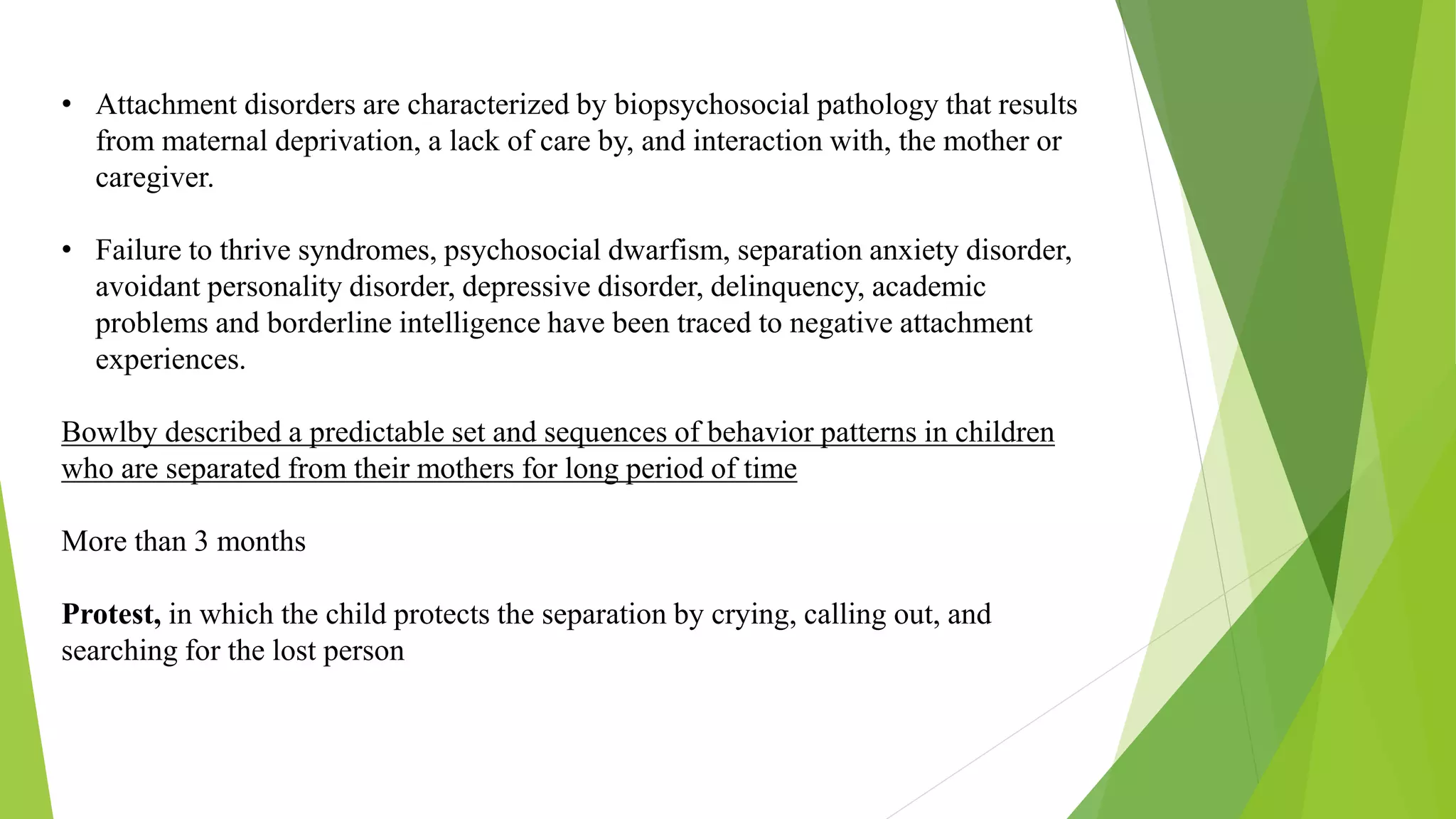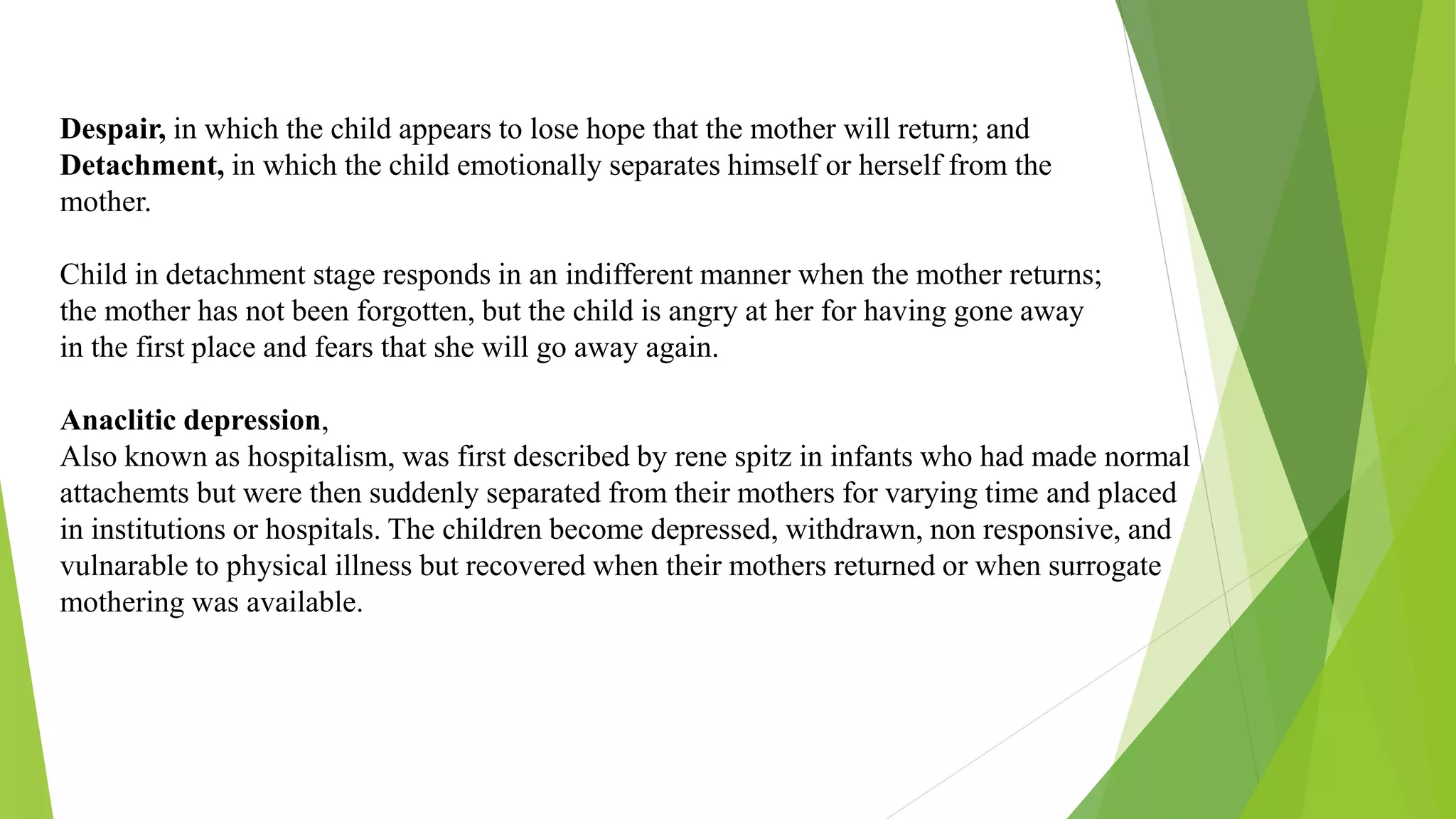- Attachment theory proposes that secure attachment to caregivers in early childhood is important for long-term social-emotional development. John Bowlby and Mary Ainsworth were influential researchers.
- Ainsworth identified secure, avoidant, and ambivalent attachment styles based on children's responses in the "Strange Situation" experiment. Secure children were distressed when separated from but sought comfort from caregivers.
- Insecure attachment can result from inconsistent or neglectful caregiving and is associated with later relationship and mental health problems. Early attachment experiences strongly influence relationships in adulthood.
